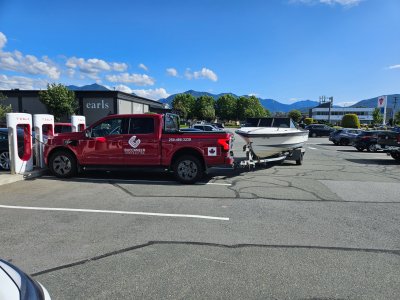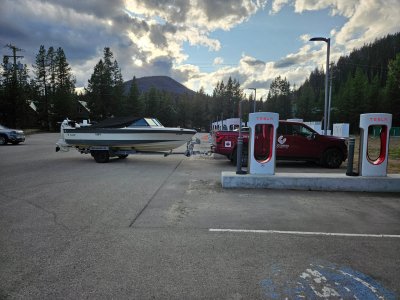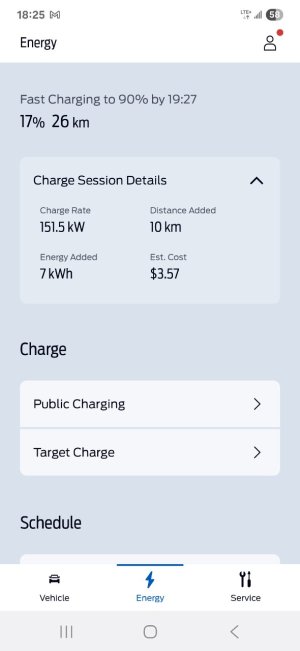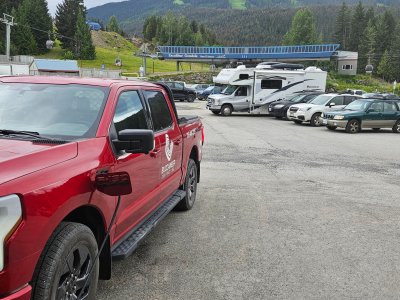Not much to report in the past quarter! Just driving, past 46,000 km now.
I recently brought the boat back from its time at the Sunshine Coast. This year's trip was a bit different from last, due to being able to use the Tesla Supercharger network. The adapter supplied by Ford is easy to use and the chargers are fast, reliable and plentiful. BC Hydro, Flo, Chevron, PetroCanada installations typically have 2-4 chargers. I've yet to see a Tesla facility that had fewer than 8. Most have 12 units or more. No fiddling with apps or cards, you just plug in and walk away. Ford emails a receipt at the end of the session.
I do have a couple of critiques, though. The main one is space. Tesla has to lease land for its facilities, and usually they go for mall parking lots. These can be pretty tight if you're towing. You have to nose in to the charger then jacknife the trailer to leave room for vehicles to get around. All Teslas have their charge port at the drivers side rear corner, so it's easy for them to get close enough to the Supercharger. But with the port on the Lightning just in front of the driver's door, the cord is barely long enough to reach. You have to nose the bumper up
really close, 1-2 inches max from the base of the charger.
This one in Chilliwack is typical. My boat is a mere 19 footer, bigger rigs would probably be thinking about unhitching unless it's a quiet time of day and mall traffic is light.

The more recent installation at the lodge in Manning Park is much better, straight pull-in format and loads of space behind. And there's a nice pub there for a meal while replacing all the electrons consumed hauling that load from sea level to 1300 m.

I still like the gas station charger concept best. They have toilets, coffee, snacks, convenience store, garbage cans, windshield cleaning stuff, air for tires. In other words, all the things vehicles and their occupants need. Some of the standalone charger setups I've used don't even have a garbage can, let alone a washroom. And gas stations usually have a decent amount of room, I've only seen one so far where you'd have to unhitch.
Gotta hand it to Tesla though for their reliable,
fast chargers. At Manning, I glanced at the Ford app after I ordered dinner to see what charge rate it was getting. 151 kW, wow! Ford's standard range battery spec says its max acceptance is 125 kW. It dropped down to 120-125 kW after this.

Nice downhill run to the Okanagan after Manning. The Ford software is quirky, it showed distance home 204 km, but available range at 90% was only 178 km (de-rated due to trailer and route). But despite an apparent deficit of 26 km, it didn't insist on adding a charging stop like it usually would. The software obviously knew there was almost 1000 m of elevation loss coming, but didn't know how to display this. I got home with 30% battery, or about a 60 km surplus.
Last thing about Tesla: price fluctuates from location to location. I encountered pricing ranging from $0.49/kWh (Hope) up to $0.78/kWh (Chwk) - 60% more! I guess rent is steep at Cottonwood Mall. As usual, when on the road you take what you get, to some extent. I guess in time there'll be an EV version of Gas Buddy (maybe there already is?). Southern BC is approaching the point where EV users have lots of options for charging in all the major corridors and price competition will start to become a thing.
Overall trip cost was $144. Based on past consumption numbers, my Silverado would have burned about 175L for a cost of $259 (based on $1.50/L). So Tesla definitely bumps the cost, last year my trip was half the gas price.





